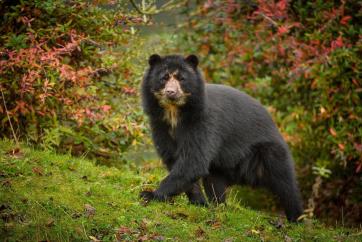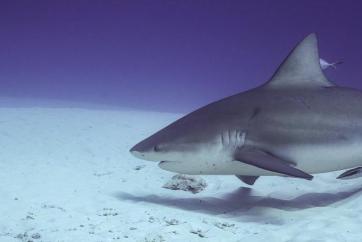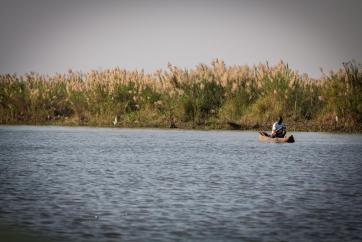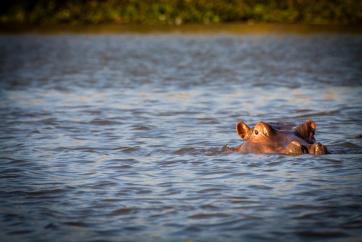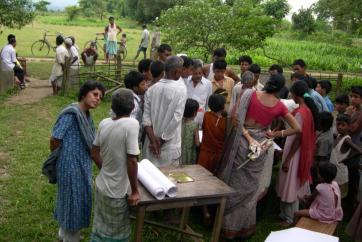To enable nature-friendly agriculture and ensure food security alongside biodiversity conservation, we have to take a close look at how communities can live sustainably alongside wildlife. This is particularly important for the 500 million smallholder farmers around the world who rely heavily or entirely on small-scale agriculture for their economic subsistence. Although a great number of species are involved in such human-wildlife conflict, including many of the large, iconic ones such as elephants, large cats, bears and sharks, which require large areas and often cannot survive only inside protected areas. A greater focus is needed on developing ways to coexist with these and many other species outside of protected areas, a critical part of visions for a 30x30 conservation area goal.
This challenge is further amplified by climate change, and likely to affect human-wildlife conflict in at least three ways: changes in species range patterns, changes in human land use, and the unpredictability of climate events.
First, species ranges are changing as wildlife is forced to adapt to changes in their environment. For example, as sea ice shrinks due to warming ocean temperatures, polar bears are forced to expand their search for prey and venture closer to human settlements, often resulting in clashes with subarctic communities. Meanwhile in Chile, guanacos have been moving from their mountain habitat to lower altitudes for better grazing conditions, where they find themselves competing with livestock and triggering demands to cull guanacos. In marine environments too sharks and other marine predators may shift their ranges with warming sea temperatures, potentially creating new hotspots of conflicts with fishermen and swimmers.
Second, land use and food production systems are changing as people adapt to climatic changes in their environments. Droughts and floods are pressuring farmers in many parts of the world to shift from agriculture to livestock. Yet this brings with it a host of new challenges, as raising livestock anywhere in the vicinity of carnivores or other predators inevitably increases the risk of predation and in turn retaliation, exacerbating the already amplified pressures on local farmers, as has become increasingly the case with Andean bears and pumas in Bolivia.
Third, with the increased unpredictability of climatic effects, unusual patterns can emerge in the behaviours or population dynamics of species. On the Indian Ocean island of Mauritius, an unusual lack of cyclones in the region has allowed the endemic and Endangered Mauritius fruit bat to increase in numbers, leading to an increase in crop-raiding of fruit orchards and an escalation of conflict over the fate of the bats. In Kenya, severe rainfall resulted in Lake Naivasha swelling to its largest size in nearly a century, flooding fields and leading hippos too close to villages and farmers, with dangerous encounters as the result. Meanwhile, farmers in Sikkim are at a breaking point of trying to coexist with increasingly frequent visits from wild boar and other species, which appear to be pressured into agricultural areas in search of food.
Human-wildlife conflict mitigation has been a crisis-management field to date, and much is still being learned about processes and approaches to resolve these issues. Preventing emerging conflicts before they escalate, however, is equally important and is brought into sharp focus by the exacerbating effects of climate change.
Where wildlife populations recover and species increase their number and expand their ranges, human-wildlife conflict very often follows. Tiger numbers in Chitwan National Park in Nepal have more than doubled – a wonderful conservation success in the eyes of some, and a disaster for others, local communities who risk their lives relying on non-timber forest products from adjacent areas. Similarly China’s small population of elephants has been growing and expanding its range in recent years, moving across populated areas and increasingly encountering people and their very tempting crop fields. And so, the day-to-day local social costs of biodiversity conservation may outweigh its long-term benefits, making tolerance of potentially dangerous wildlife a tall order for many people.
What needs to happen for communities to be able to coexist alongside wildlife? We need to factor biodiversity conflict resolution into climate change adaptation. We need to invest in conflict resolution skills and become better at proactively anticipating and preventing these conflicts from escalating. As climate change puts further pressure on communities and farmers, adding fuel to underlying social tensions around inequality and poverty, repeated negative impacts from living near protected areas or wildlife undermines a willingness to support conservation efforts, so de-risking the costs of living near wildlife is essential.
We can apply many of the principles of climate adaptation to managing conflicts over wildlife. As outlined by the IUCN SSC Position Statement on Human-Wildlife Conflict, these situations need to be managed using well-informed, holistic, and collaborative processes that take into account underlying social, cultural and economic contexts, as stated also in the IUCN World Conservation Congress Resolution to addressing human-wildlife conflict (WCC 2020 Res 101).
Conflicts over biodiversity present not only a challenge, but also an opportunity for communities, governments and organisations to contribute the CBD 2050 Vision of “Living in harmony with nature” and its Post-2020 Global Biodiversity Framework which envisages a world in which environmental conflicts are much reduced.
For further resources about managing human-wildlife conflict and achieving coexistence please visit the IUCN SSC Human-Wildlife Conflict Task Force online library at www.hwctf.org
About the authors

Alexandra Zimmermann is the Chair of the IUCN SSC Human-Wildlife Conflict Task Force. She specializes in conservation conflict and human-wildlife conflict, with over 20 years’ experience in leading biodiversity conflict resolution initiatives around the globe. Having worked with hundreds of practitioners, researchers, students, policy-makers and community members in a vast diversity of conflict situations, she brings global perspectives and insights to this growing conservation challenge. Alexandra is also Senior Research Fellow at the University of Oxford’s Wildlife Conservation Research Unit, and Senior Advisor to The World Bank’s Global Wildlife Program, and was previously Head of Conservation Science at Chester Zoo in the UK. She is an interdisciplinary scientist, trained at the universities of Leeds, Kent, Oxford and Harvard, with degrees in zoology and conservation science before she specialised in social research, non-profit strategy, conflict negotiation and multilateral conflict resolution.
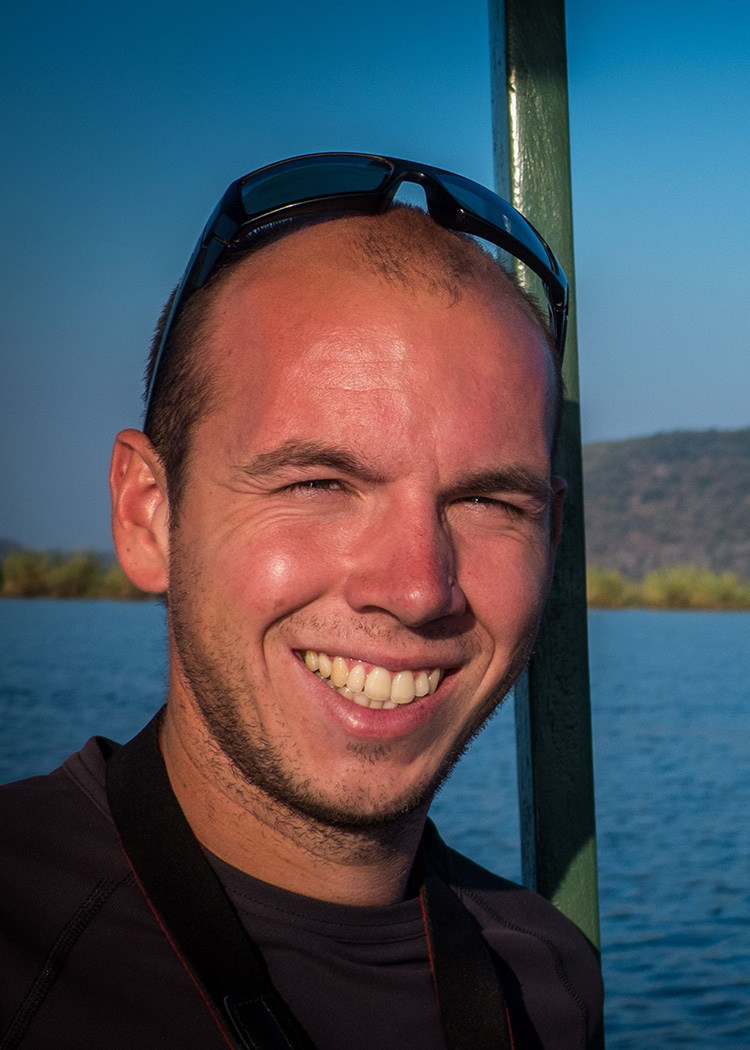
James Stevens is the Programme Officer for the IUCN SSC Human-Wildlife Conflict Task Force. He has always been interested in the interactions between people and wildlife. In particular, developing an interest in understanding patterns of impacts but also what influences attitudes towards wildlife and applying this knowledge to reduce negative interactions. He has worked on a variety of projects from investigating human access in grizzly bear habitat, to assessing the impacts of human disturbance and habitat on large vertebrates in the Brazilian Amazon. He completed his PhD at the University of Bristol in 2018, investigating human-elephant conflict in the Makgadikgadi region of Botswana, has a Masters in Applied Ecology and Conservation from the University of East Anglia and a degree in Biological Sciences from the University of Birmingham.


